Welcome to the lush world of vertical herb gardens, where the joy of gardening reaches new heights! Whether you’re a beginner eager to dip your toes into the soil or a seasoned green thumb looking for fresh inspiration, this guide is your ticket to cultivating a thriving, space-saving oasis. With our carefully curated list of DIY designs, you’ll discover how to transform even the smallest nooks and crannies into vibrant, aromatic gardens that delight the senses.
In today’s fast-paced world, these creative solutions offer more than just aesthetic appeal; they provide practical benefits that will enrich your gardening experience. Vertical herb gardens not only maximize limited space but also make plant care more accessible and manageable. By following our easy-to-implement ideas, you’ll gain confidence in your gardening abilities, harvest fresh flavors right from your wall, and enjoy the immense satisfaction that comes from nurturing life. Get ready to embark on a journey that promises to elevate your gardening skills and fill your home with the delightful scents of success!
Choose Lightweight, Durable Containers
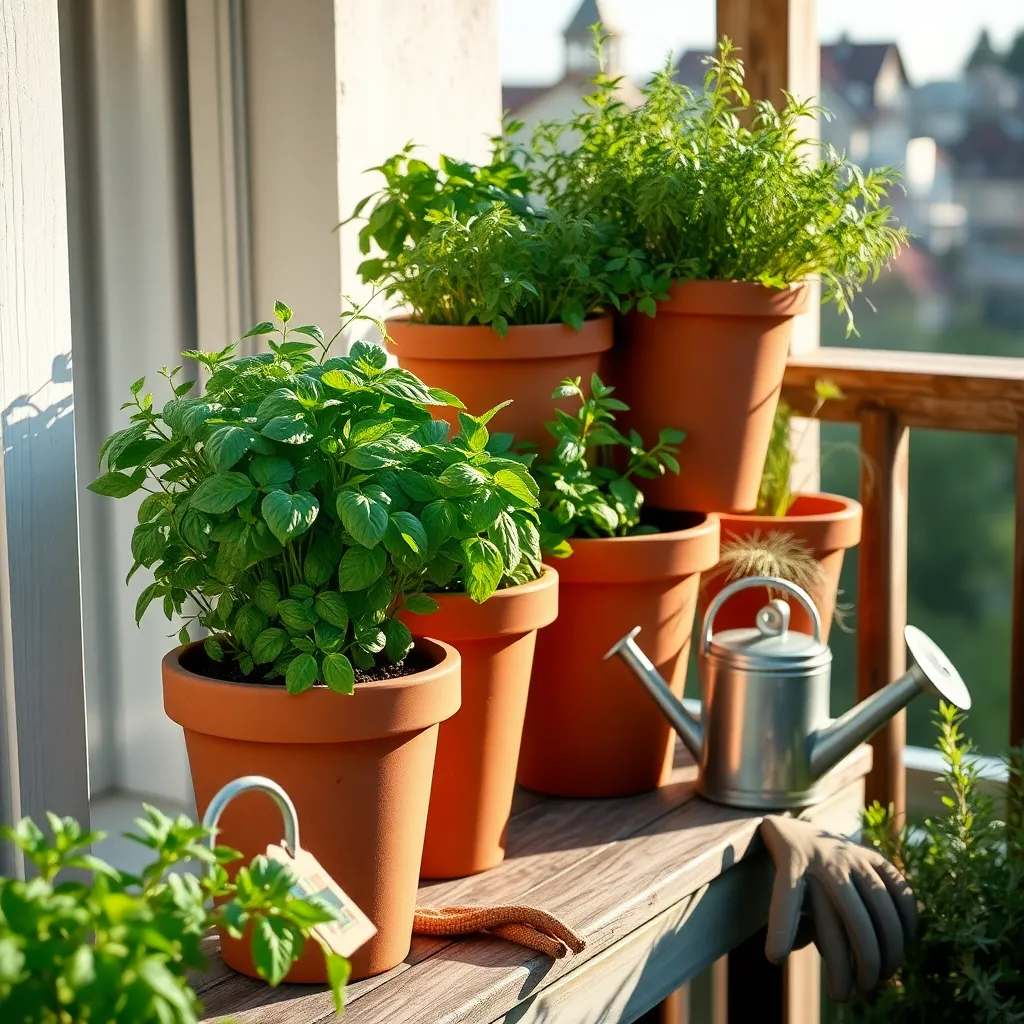
When building a vertical herb garden, selecting the right containers is crucial to ensure plant health and ease of maintenance. Lightweight, durable containers are ideal because they make it easier to rearrange your garden and reduce wall stress.
Consider materials such as plastic, fiberglass, or fabric, which are both durable and weather-resistant. These materials offer the advantage of being easy to clean and often come with built-in drainage, essential for preventing root rot.
For beginners, starting with a few small pots can be an excellent way to test different herbs and their growth habits. Ensure that each container has adequate drainage holes and use a well-draining potting mix—a blend of peat, perlite, and vermiculite works well.
More experienced gardeners might explore self-watering containers, which can help regulate moisture levels, particularly in sunny locations. This can be particularly beneficial for herbs like basil and mint that thrive with consistent moisture but don’t like soggy roots.
Remember to regularly check the weight and stability of your vertical setup, especially after watering. Proper support and secure mounting will help prevent accidents and ensure your garden remains a safe and thriving space.
Install Wall-Mounted Planter Shelves
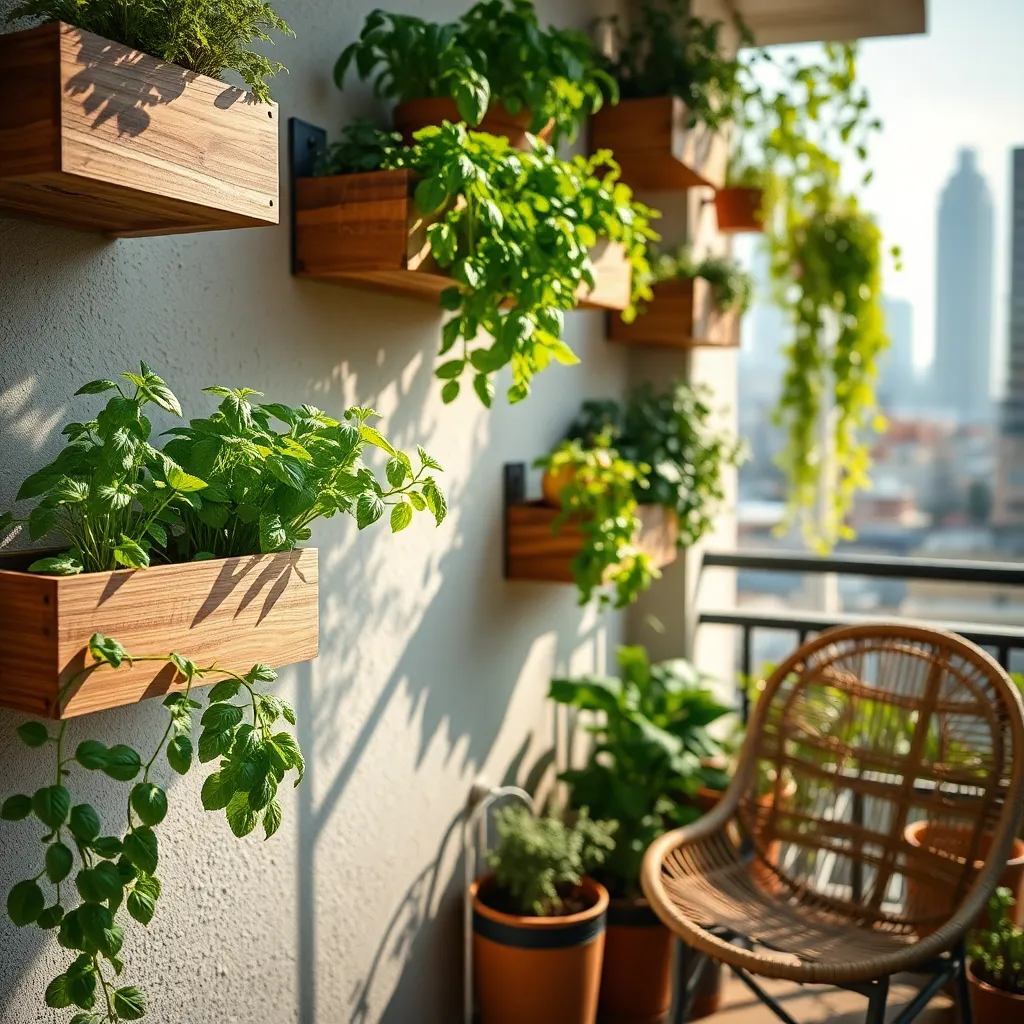
Installing wall-mounted planter shelves is an excellent way to maximize space while keeping your herbs within easy reach. To start, choose shelves made from weather-resistant materials like cedar or metal to ensure longevity, especially in outdoor settings.
Before mounting, check the wall surface to ensure it can support the weight of the shelves and the plants. Use a level and a measuring tape to properly align and space the shelves, providing enough room for plant growth.
Position the shelves in a location that receives adequate sunlight, as most herbs require at least six hours of direct light each day. If natural sunlight is limited, consider installing grow lights to supplement your herbs’ light needs.
When planting, use a high-quality potting mix that provides good drainage, preventing root rot. Regularly monitor soil moisture levels and water herbs when the top inch feels dry, adjusting frequency based on the specific needs of each plant.
Advanced gardeners might want to install an automatic drip irrigation system to ensure consistent watering. Additionally, consider adding a layer of mulch to help retain moisture and reduce the frequency of watering.
Utilize Vertical Space Efficiently
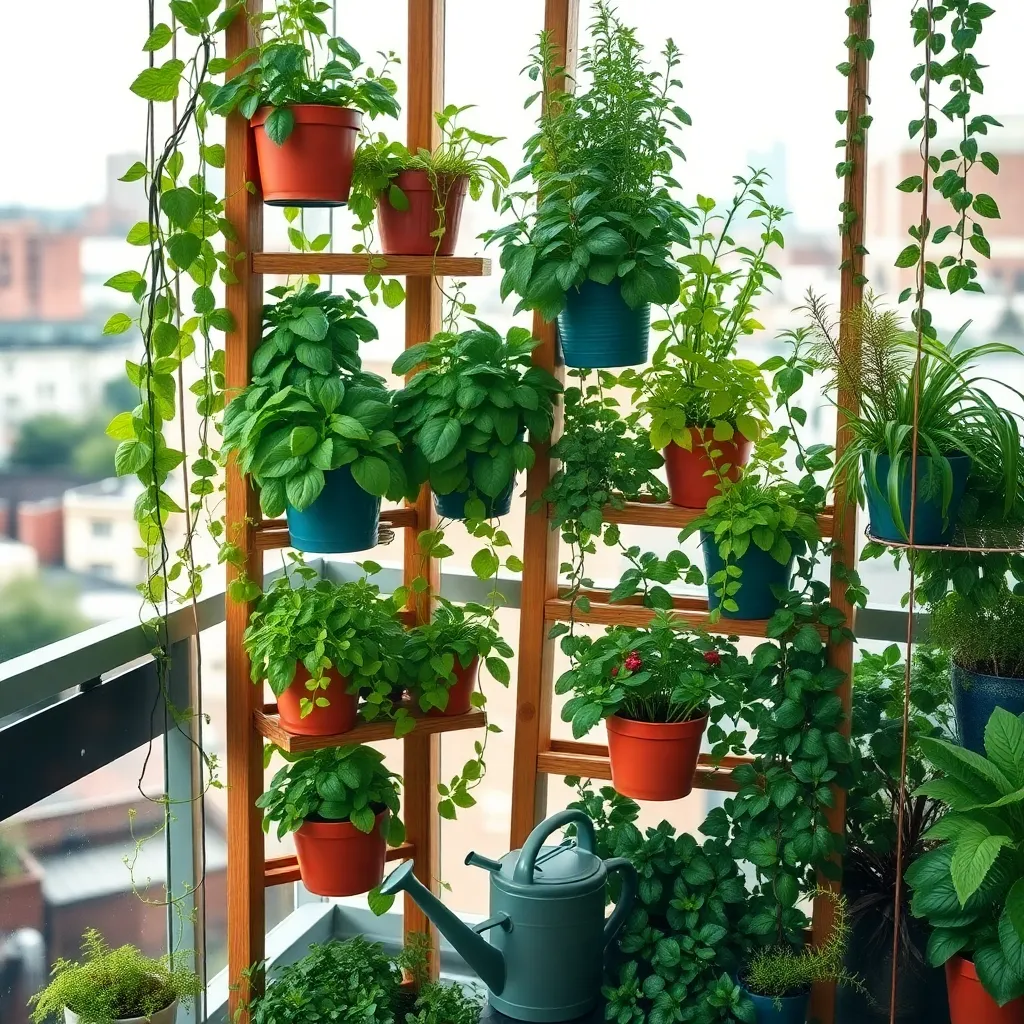
Vertical gardening is an excellent way to make the most of limited space while adding greenery to your environment. By growing herbs vertically, you can create a lush, productive garden even in small areas, such as balconies or patios.
To begin, consider using a trellis or a lattice structure to support climbing herbs like peas or beans. These plants naturally grow upwards and benefit from supports that guide them as they thrive in sunlight.
For those with limited outdoor space, hanging planters can be a perfect solution. They allow you to grow herbs such as mint, basil, or parsley, which require well-draining soil and regular watering to prevent drying out.
Advanced gardeners might explore hydroponic systems to maximize vertical space. Such systems can be customized to fit your available area and offer precise control over nutrient delivery, ensuring herbs like cilantro or thyme flourish.
Additionally, consider the use of stackable planters, which offer multiple levels of growing space. These are ideal for herbs with shallow root systems, such as chives or oregano, and can be rotated to ensure even sunlight exposure.
Remember that vertical gardens require careful attention to watering, as gravity can cause the soil to dry out more quickly. Installing a drip irrigation system can help maintain consistent moisture levels and promote healthy plant growth.
Select Sunlight-Loving Herb Varieties
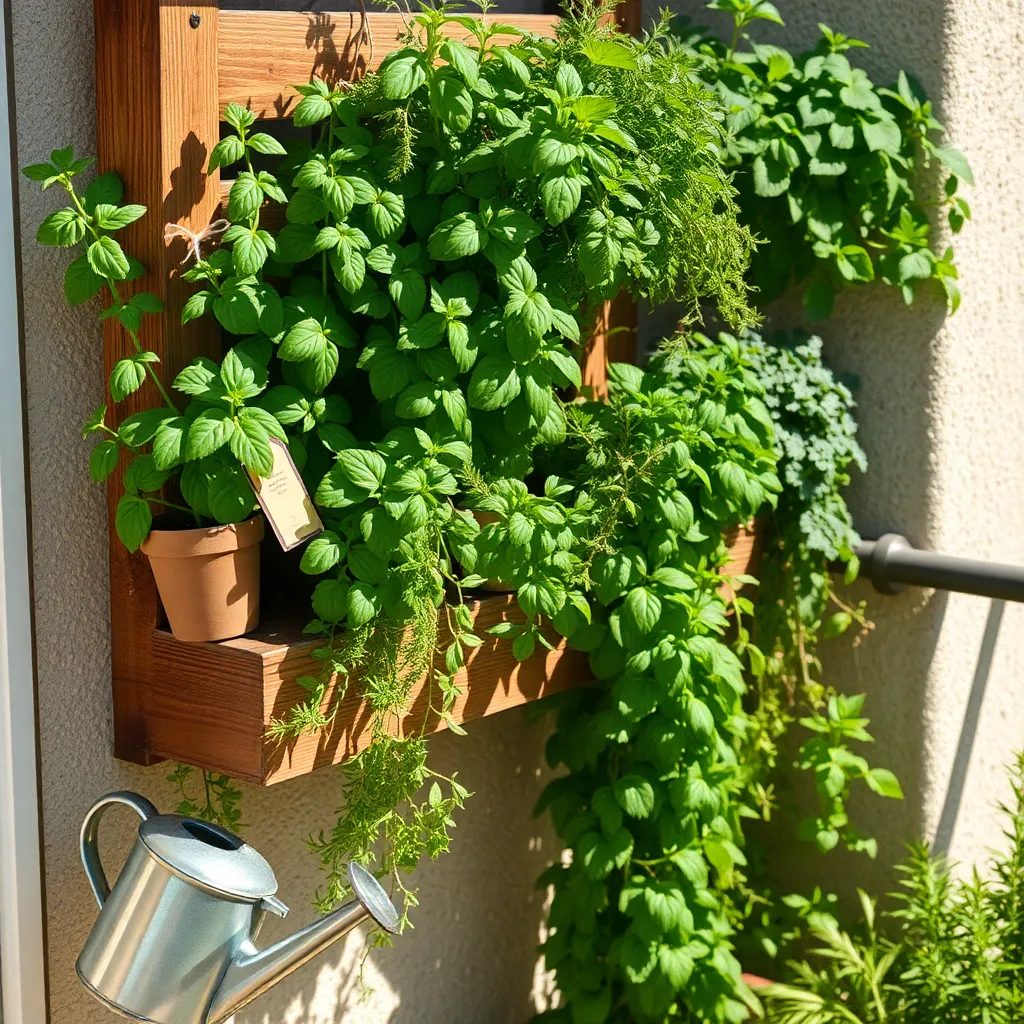
When planning your vertical herb garden, focus on selecting sun-loving varieties that thrive in bright conditions. Herbs like basil, rosemary, and thyme are excellent choices for locations that receive plenty of direct sunlight, requiring at least six to eight hours a day to flourish.
Basil is a particularly rewarding herb to grow, known for its aromatic leaves and culinary versatility. For optimal growth, plant basil in well-draining soil enriched with organic matter, and ensure it receives consistent moisture without becoming waterlogged.
Rosemary, a hardy perennial, is perfect for vertical gardens where space is limited. To keep rosemary healthy, use a sandy soil mix to mimic its native Mediterranean environment and allow the soil to dry out between waterings, preventing root rot.
Thyme is another sun-loving herb that is both attractive and useful in the kitchen. This drought-tolerant plant thrives in rocky or sandy soils, and its compact growth habit makes it ideal for vertical planters where space is at a premium.
Incorporate Drip Irrigation Systems
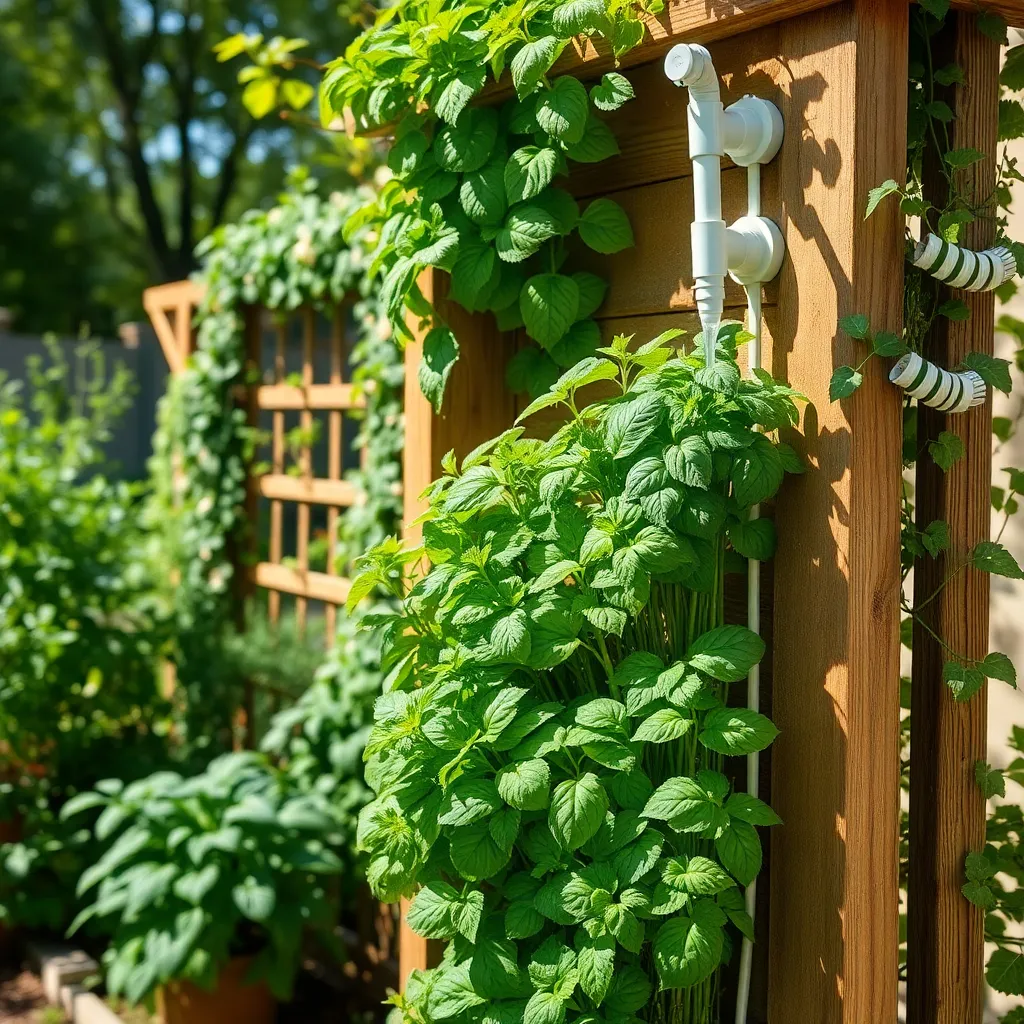
Incorporating a drip irrigation system into your vertical herb garden can significantly enhance its efficiency. This method ensures that each plant receives a consistent amount of water, reducing the risk of over or under-watering.
Drip irrigation is especially beneficial for vertical gardens where water can quickly run off. By delivering water directly to the roots, it helps conserve water and keeps the foliage dry, minimizing the risk of fungal diseases.
To set up a basic drip irrigation system, you’ll need a hose, emitters, and connectors specifically designed for drip setups. Position the emitters near the base of each herb plant to ensure optimal water absorption and even growth.
For those looking to expand their gardening skills, consider using a timer with your drip system. This addition allows you to automate watering schedules, ensuring your herbs receive the right amount of moisture, even when you’re away.
Conclusion: Growing Success with These Plants
In exploring the realm of DIY vertical herb gardens, we discovered key relationship concepts that are as enriching as the gardens themselves. First, communication is like the soil; it nurtures growth when open and honest. Second, creativity is essential, much like finding unique solutions for garden spaces. Third, patience plays a crucial role, mirroring the time it takes for herbs to flourish. Fourth, teamwork in garden planning strengthens bonds, and lastly, adaptability ensures thriving relationships and gardens alike.
As a next step, why not embark on a mini project together? Choose a small space, plan your vertical garden, and nurture it as a team. This shared experience can cultivate deeper understanding and offer joyful moments of collaboration.
Remember, enriching your relationship is a continuous journey. Bookmark this article to revisit these insights and ideas whenever you need a fresh perspective or a spark of inspiration.
Looking forward, may your relationship and your garden both thrive, nourished by the principles that sustain them. Empower yourself to make each interaction count, and let these ideas seed a future of flourishing connections.

